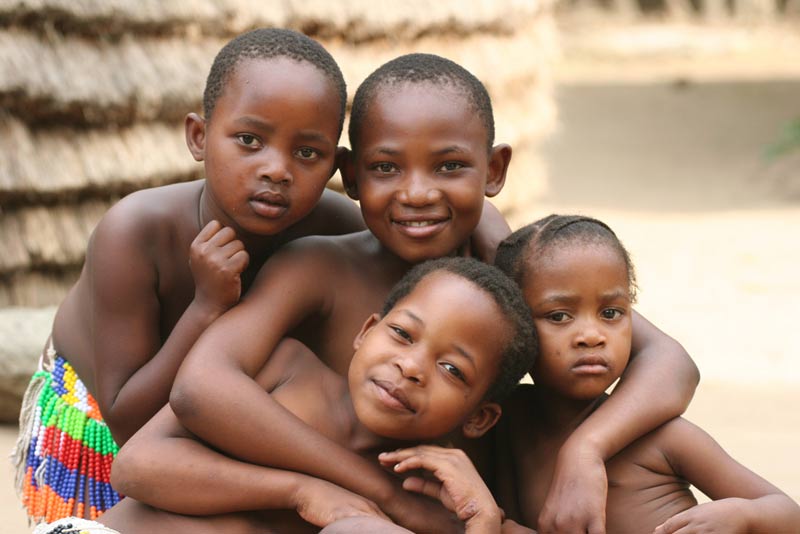Plunge in Child Mortality Leaves UN Unsatisfied

Child mortality has decreased rapidly over 20 years, though not fast enough to reach the United Nations goal of lessening deaths of children under age 5 by two-thirds between 1990 and 2015, according to U.N. researchers.
Given current trends, the child mortality goal set out by U.N. officials won't be reached until 2038, and the mortality rate won't reach First World levels until 2100, the researchers said.
With the United Nations slated to release its latest 2011 estimates of global child mortality next month, international teams of researchers shone a spotlight today (Aug. 28) on some of the challenges of estimating how many children die annually around the world. For instance, many countries rely on incomplete surveys, and researchers have use computer projections for some areas completely lacking in data.
Every day, 21,000 children across the globe die, researchers estimate. The annual total declined from 12 million child deaths in 1990 to an estimated 7.6 million in 2010.
"The burden of child deaths is still unacceptably high," advisers to the United Nations Inter-Agency Group for Child Mortality Estimation write in the journal PLoS Medicine.
Holly Newby, senior adviser on child health at UNICEF, told LiveScience, "Feeling a sense of progress is tempered by the fact that we have millions of children dying needless, preventable deaths, and we need to do more." [Top 10 Leading Causes of Death]
Child mortality estimates
Sign up for the Live Science daily newsletter now
Get the world’s most fascinating discoveries delivered straight to your inbox.
Each year demographers and researchers update the number of worldwide child deaths in an international effort that includes UNICEF, the World Health Organization and the World Bank. The estimates affect how the U.N. moves forward with its Millennium Development Goals program, a series of eight goals to assist the developing world adopted in 2000.
The child-mortality goal, or "MDG 4," "is an example of what was a very ambitious target," Newby said. "Even among some of those countries that have not met the target, there has really been incredible progress."
In the past 10 years, for instance, sub-Saharan nations facing the challenges of HIV doubled the rate of decline in mortality from the 1990s, Newby said. [Wishful Thinking: 6 'Magic Bullet' Cures That Don't Exist]
"Some of those counties might not meet the goal, but as a world community we need to stand up and say 'Bravo,' because progress has been made," Newby said.
Last month U.N. officials announced that the MDG program had reached significant targets in the efforts to reduce slums, decrease poverty and improve water resources for people around the globe.
Tricky task of counting deaths
The task of figuring out child mortality worldwide is enormous and researchers must tackle many region-specific trends, data gaps and conflicting statistics.
"Only 60 counties have fully functioning sources of mortality data; the rest of the countries rely on surveys," said Danzhen You, statistics and monitoring specialist at UNICEF and co-author of two of the PLoS Medicine papers on child mortality methods.
In the past 10 to 20 years, the data gap has shrunk as international surveys have become more prevalent, including 230 surveys in another 100 low-income countries.
"It's a very exciting story in terms of data availability and what we can start to say about these low-income countries," Newby said.
Typically surveys convey snapshots of child mortality for the prior five years, but researchers argued that in some cases, shortening the surveys to get data a year out may be beneficial.
In some cases, little or no data exist at all. "If there is no data, then we can only base estimates on modeling; now the uncertainty is narrowing," You said.
In areas such as sub-Sahara Africa with high HIV infection rates, child deaths may be underestimated because the mother herself has died from AIDS, researchers found.
Estimates for the probability of a child under 5 dying can vary by as much as 10 percent depending on the data and models used, one research group found.
"It's really like being a detective, seeking out all the available data and clues and trying to make sense of it," Newby said.
Challenges ahead
Several challenges remain to decrease child mortality in developing nations where, for example, 64 percent of child deaths in 2010 came from treatable pneumonia, diarrhea and malaria.
For those sitting in comfortable homes or offices, Newby said, “it’s maybe a moment to reflect on those who don’t have such advantages. It’s not really about the MDG 4 target, it’s about improving lives.”
Follow LiveScience on Twitter @livescience. We're also on Facebook & Google+.









